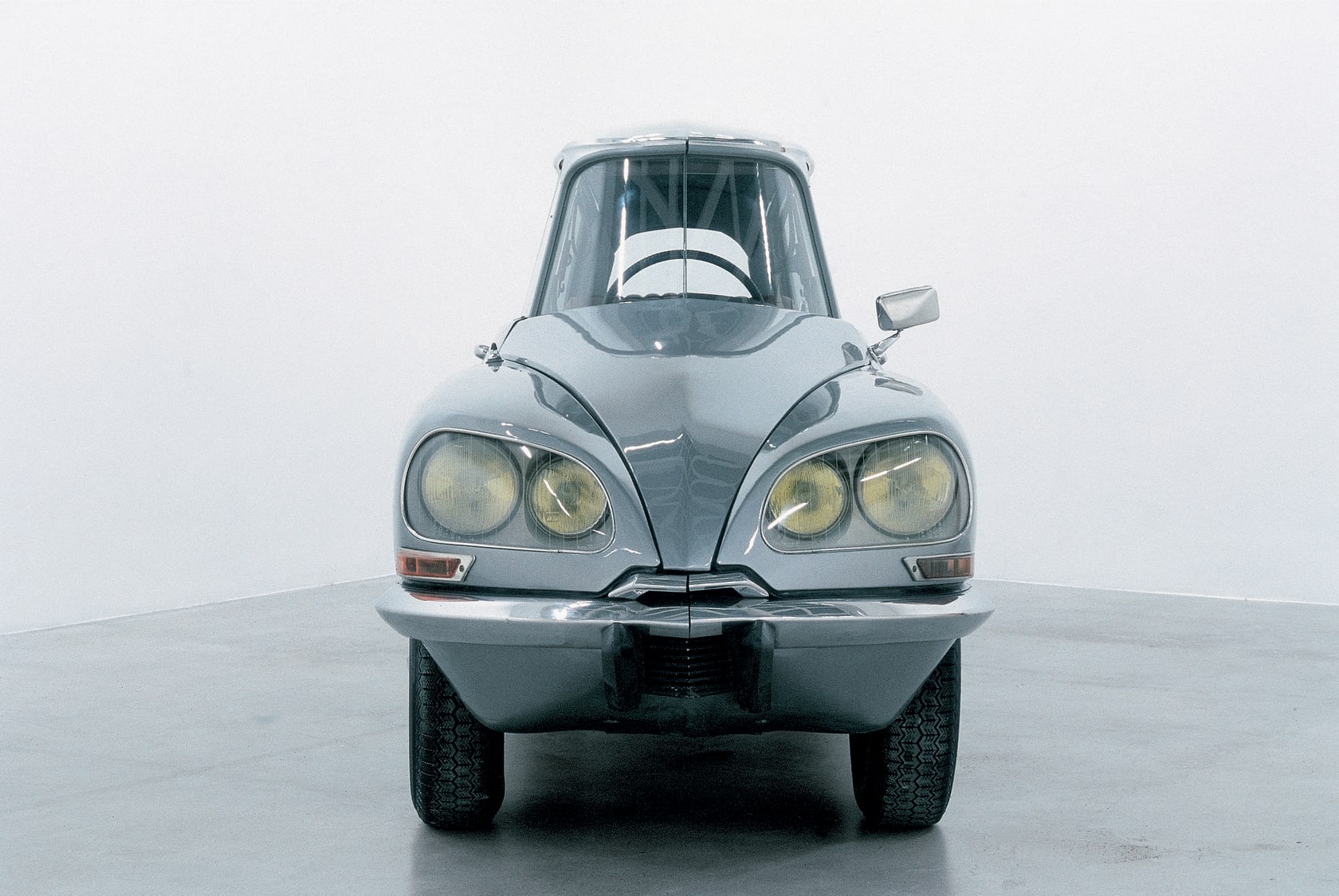
Gabriel Orozco
La DS, 1993
Orozco has referred to La DS in his notebooks as a "3-dimensional photograph" and a "self-portrait." The piece is made from a 1960s Citroën DS (the letters DS phonetically sound like "Déesse" meaning "Goddess" in French) which Orozco cut lengthwise into thirds with the help of an assistant. They removed the center part and reassembled the two remaining sections into an elongated, aerodynamic whole. While the shape embodies a sense of speed and acceleration, the engine has been removed rendering the vehicle inert. Visitors were invited to sit in the car, which now has only room for a driver and one backseat passenger.
Orozco has referred to La DS in his notebooks as a "3-dimensional photograph" and a "self-portrait." The piece is made from a 1960s Citroën DS (the letters DS phonetically sound like "Déesse" meaning "Goddess" in French) which Orozco cut lengthwise into thirds with the help of an assistant. They removed the center part and reassembled the two remaining sections into an elongated, aerodynamic whole. While the shape embodies a sense of speed and acceleration, the engine has been removed rendering the vehicle inert. Visitors were invited to sit in the car, which now has only room for a driver and one backseat passenger.